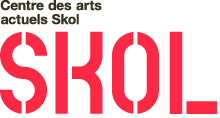The Unknown Artist [Unit 1]: Territories
Video Installation
January 14 – February 12, 2011
Opening on saturday January 15, 3-5pm
Meeting with the artist at 2pm
Project Description
“[This] may well be what many of them are doing without quite realizing that they may be participating in a collective project that encompasses all their singular interventions and experimentations.”
– Tismanyan proverb
The Unknown Artist (UA) In Multiple Guises
Contrary to a monument, which embodies a collective value, sentiment, memory in a single, usually immutable and grandiose work, the Unknown Artist (UA) programming is a singular yet collective entity that exists only by way of a figure yet to come along on an untrodden path. The exhibitions are a response to the call for proposals that invited artists to contribute works toward the corpus of an UA described as a resident of mobile spaces, a castaway on a floating island, a labourer of many faces last seen dispersing multiple forms in a slowly crystallizing topography.
In the exhibitions selected in this programming, the UA assumes multiple guises and include a vast unpeopled architectural space, a signature without a corpus, a corpus without a known originator, a singular voice spoken by many tongues, a futurologist, an anonymous work collective, and a card-wielding miner extracting knowledge from the ground of the unknown. In focusing attention on the status of the individual artist and by the same token blurring and stretching the boundaries of this exclusive authorial reserve, these works and interventions question notions of subjectivity and territory, identities known and unknown, and emergence modalities explored and unexplored. The unknown variable is not only an integral component of the exhibitions but also an element at work in the programming’s articulation and indeterminate nature. Since the form and content of the contributions remain either partially or entirely unknown, the UA will only emerge as a fully fleshed out figure at the conclusion of the programming.
A process that can be described as reverse curating, for it is only after all is said and shown that the precise contours and extent of the exhibitions may be revisited and submitted to a critical structuring and assessment. This after the fact, inverted approach embraces and assumes the uncertainty inherent in the unknown in a gesture that parallels the artists’ engagement and risk-taking. Nevertheless, though there may be no set point of arrival, the entry point is fixed and the contours of the territory to be traversed have been traced: the Unknown Artist is now free to strike “poses” on a continent born of bubbling up paths.
Unit 1 : Territories
Curator: Bernard Schütze
The exhibitions and interventions are grouped together into three distinct yet complementary units placed as signposts along the way. The first unit presents a video installation which draws viewers into a space where their gaze is invited to wander into a subject-less territory. Serving at once as an entry point and space of emergence, the notion of territories sets the stage for the [UA]’s multiple embodiments and trajectories.
A video in which a seemingly continuous shot travels through a series of abandoned rooms and corridors to form an improbable architectural entity with no outside. Comprised of a montage of footage selected from various video-sharing websites the work weaves multiple subject positions into a fictional monologic p.o.v belonging to no one in particular. In playing on the narrative conventions of the subjective shot and the trickery of montage, Patrick Ward’s Monologue reveals a paradoxical territory born of the encounter between an unknown subject and an unknowable object.
Keys
1. “The moment one drops the point of view of the collecting and observing subject and assumes the perspective of the collected object, the violence inherent in all sorting, re- and devaluing, fixing, and defining becomes apparent.” issuu.com/kouros/docs/collecting
2. Rope (1948)
3. “les travellings sont affaire de morale” – Jean-Luc Godard





